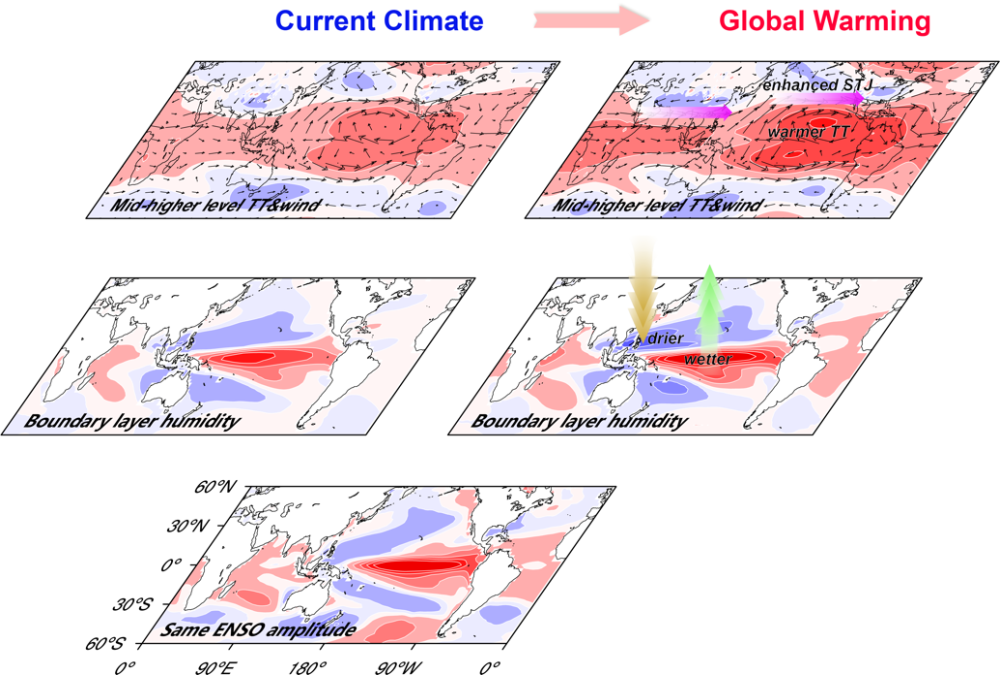
El Niño-Southern Oscillation (ENSO) is an irregular periodic variation in winds and sea surface temperatures (SSTs) over the tropical eastern Pacific Ocean. It may lead to extreme weather events across the globe due to its ability to change global atmospheric circulation. Thus, determining how ENSO responds to greenhouse warming is crucial in climate science.
However, quantifying and understanding ENSO-related changes in a warmer climate remains challenging due to the complexity of air-sea feedbacks in the tropical Pacific Ocean and to model bias.
An international team of scientists from the Institute of Atmospheric Physics (IAP) of the Chinese Academy of Sciences, the University of Tokyo, and the University of California, San Diego reported that ENSO-related climate variability seems doomed to increase under global warming.
Their findings were published in Nature Geoscience on April 15.
Recently, the climate science community has found that ENSO’s changes in fact strictly obey some basic physical mechanisms, which can reduce uncertainty in ENSO projections under greenhouse warming.
"The saturation vapor pressure increases exponentially with the increase of temperature, so the same air temperature anomaly will lead to a larger saturation vapor pressure anomaly in a warmer climate," said lead author Dr. HU Kaiming from IAP. "As a result, under global warming, even if ENSO's sea surface temperature remains unchanged, the response of tropical lower tropospheric humidity to ENSO will amplify, which in turn results in major reorganization of atmospheric temperature, circulation and rainfall."
Based on this mechanism, the team deduced an intensification in ENSO-driven anomalies in tropical humidity, tropical rainfall, upper tropospheric temperature in the tropics, and the subtropical jets under global warming. Almost all the latest CMIP5/6 climate model projections agreed well with the theoretical deduction, indicating the mechanism and projections were robust.
"As extreme weather often results from ENSO-induced anomalous atmospheric circulation and temperature, the intensification of ENSO-driven atmospheric variability suggests that the risk of extreme weather will increase in the future," said Dr. HU.

Schematic diagram of ENSO-related changes under global warming. The responses to ENSO of boundary layer humidity, rainfall, tropospheric temperature and circulation are amplified in a warmer climate. (Image by IAP)

86-10-68597521 (day)
86-10-68597289 (night)

52 Sanlihe Rd., Xicheng District,
Beijing, China (100864)

